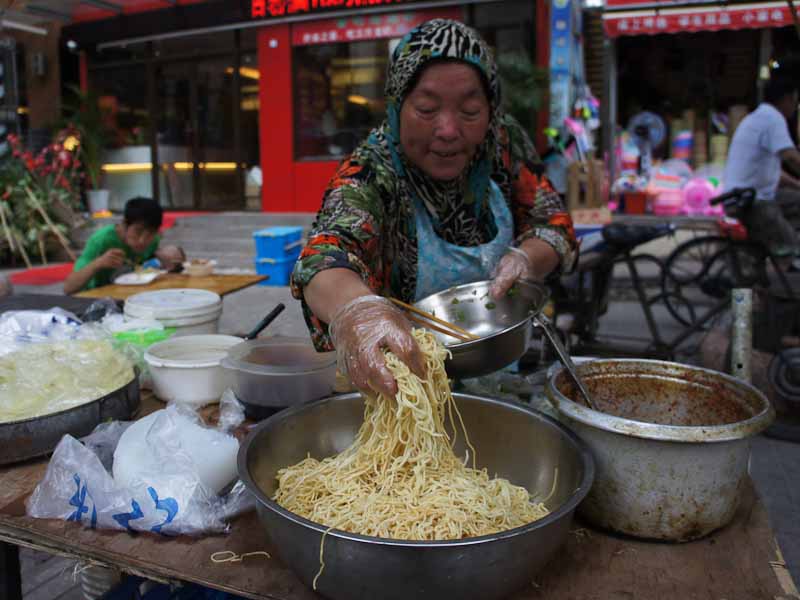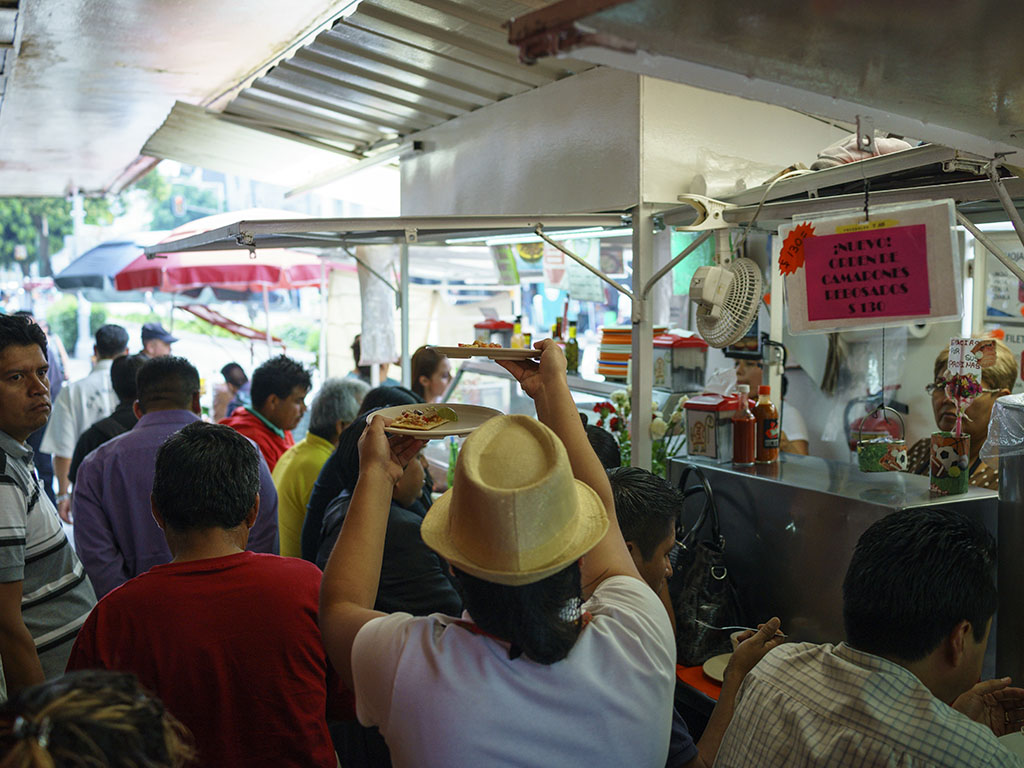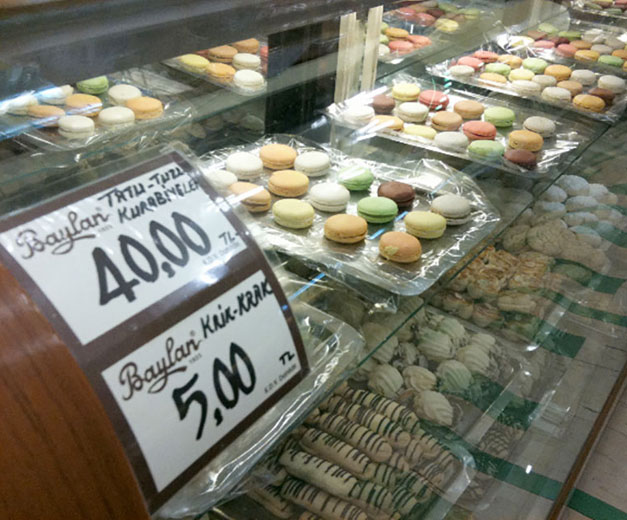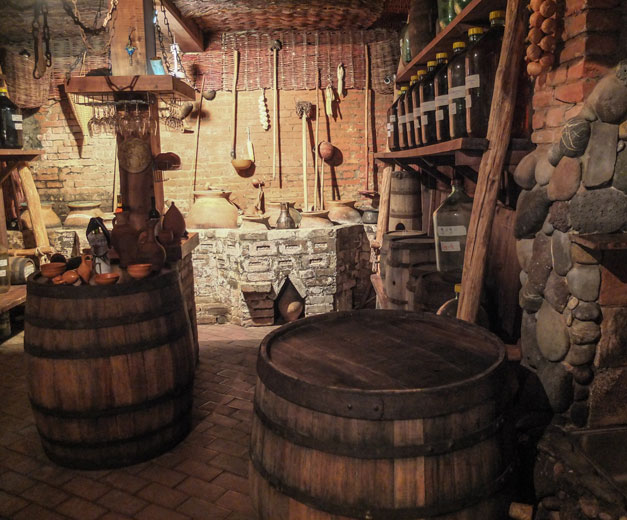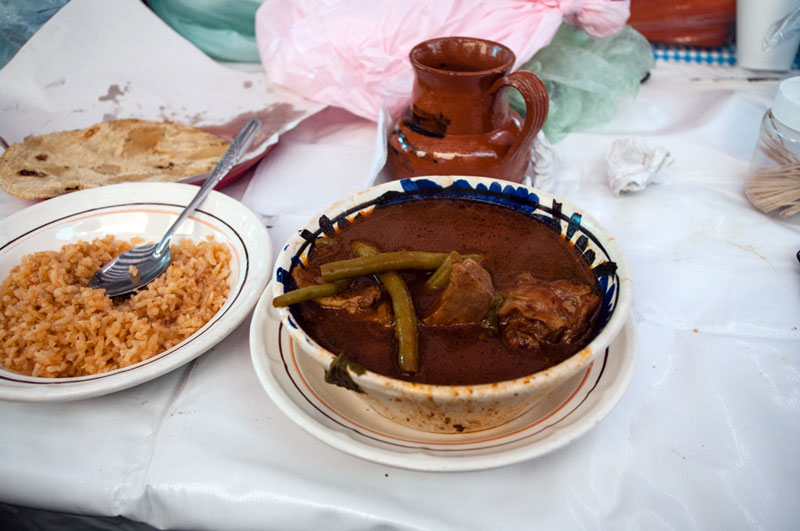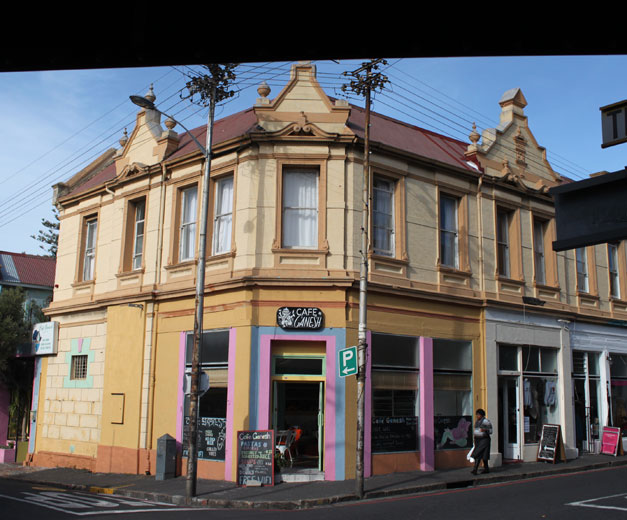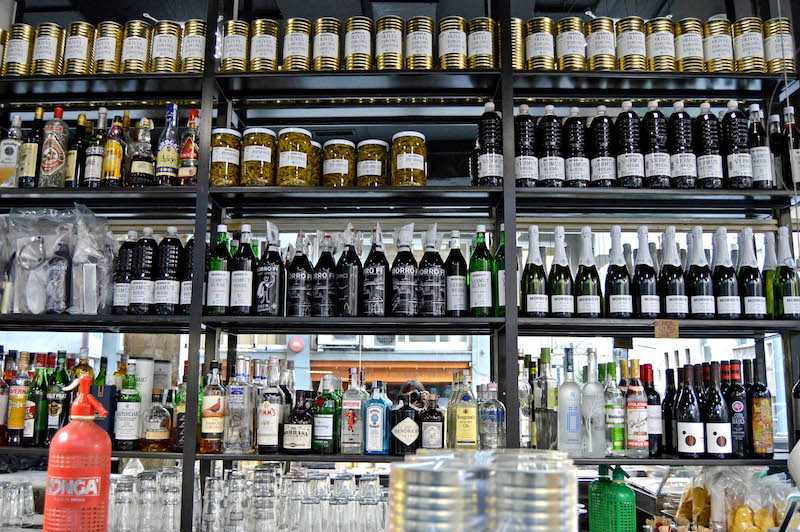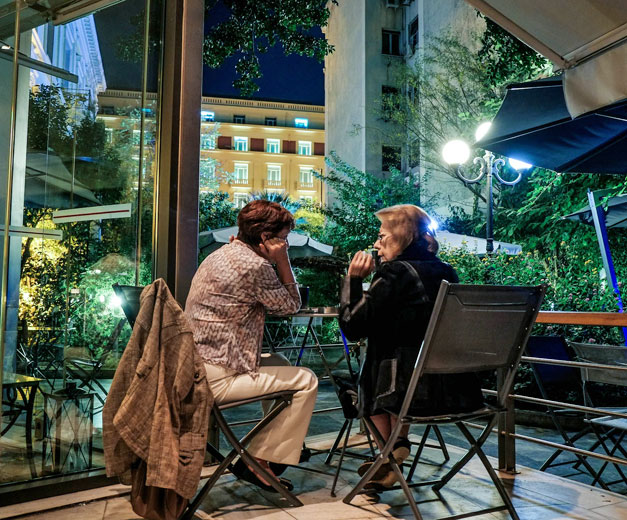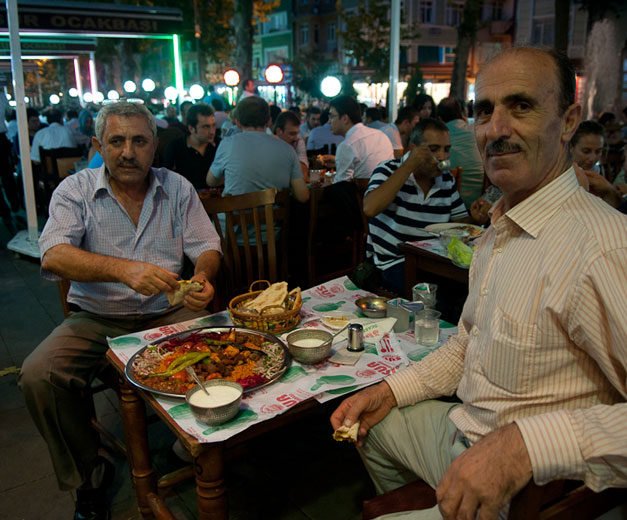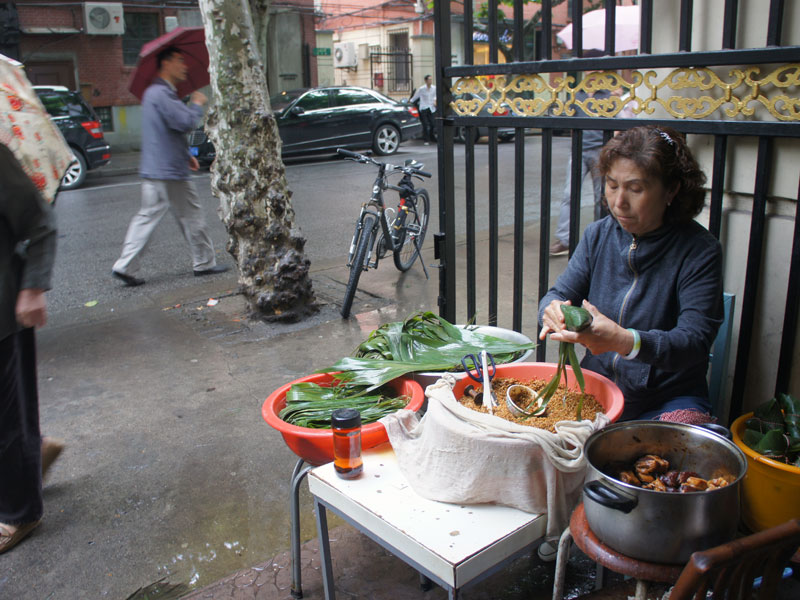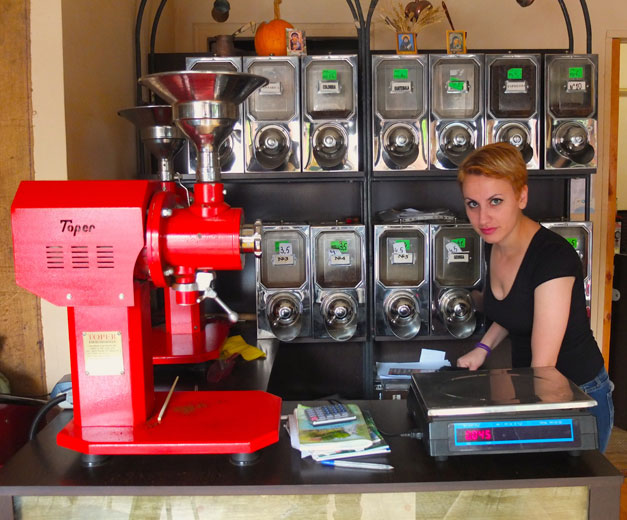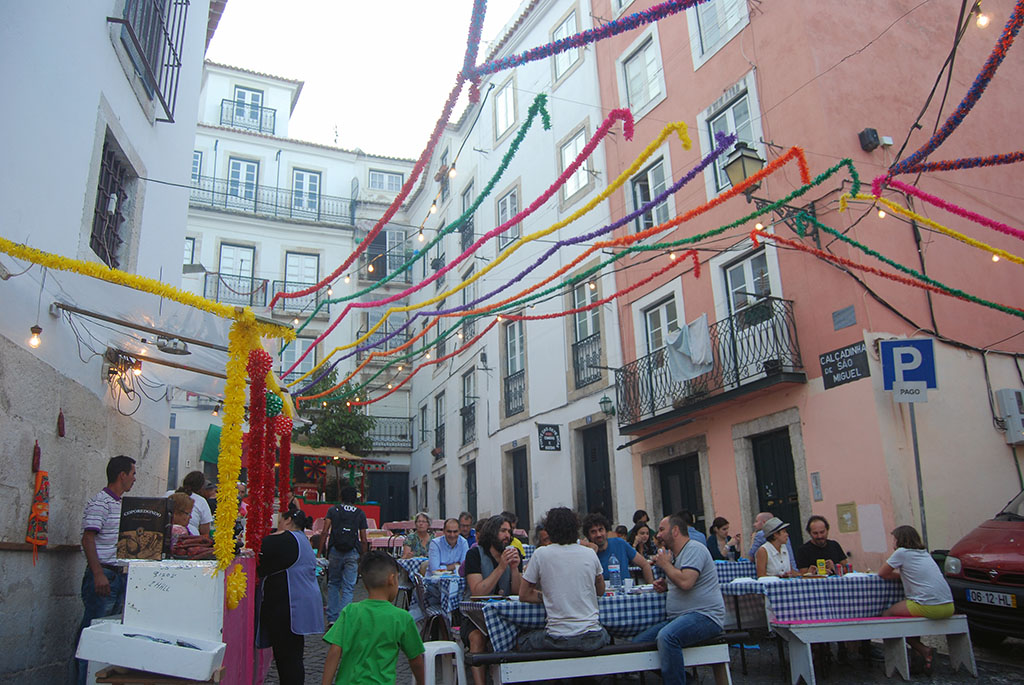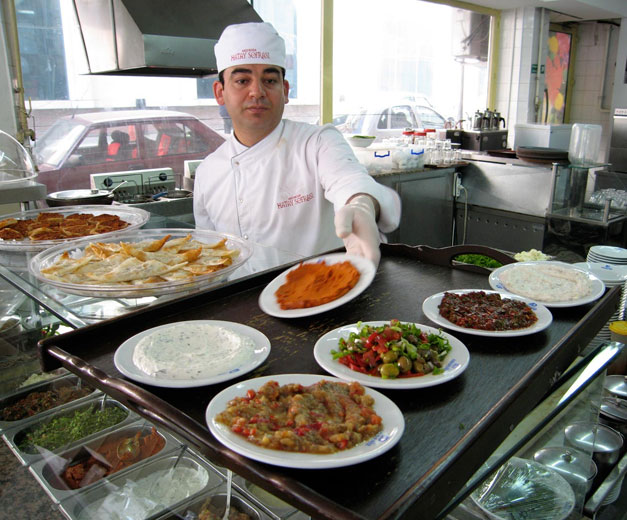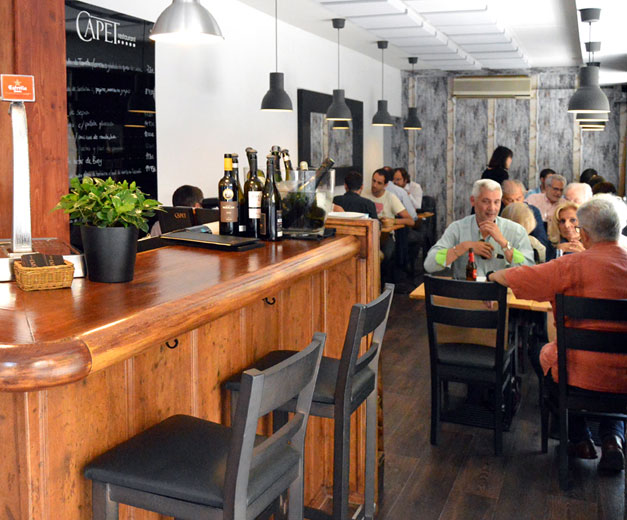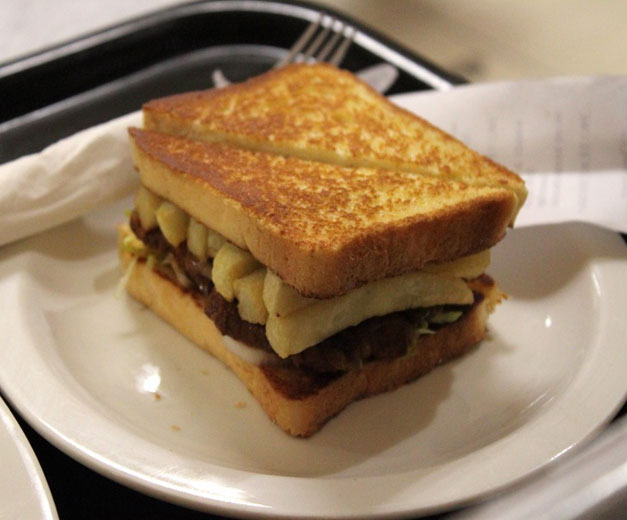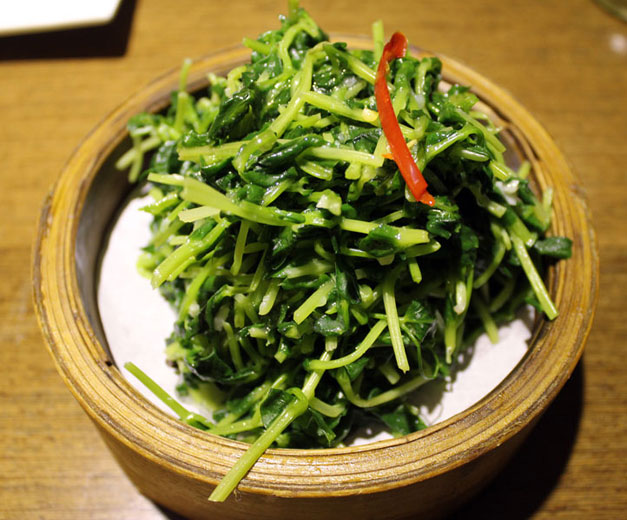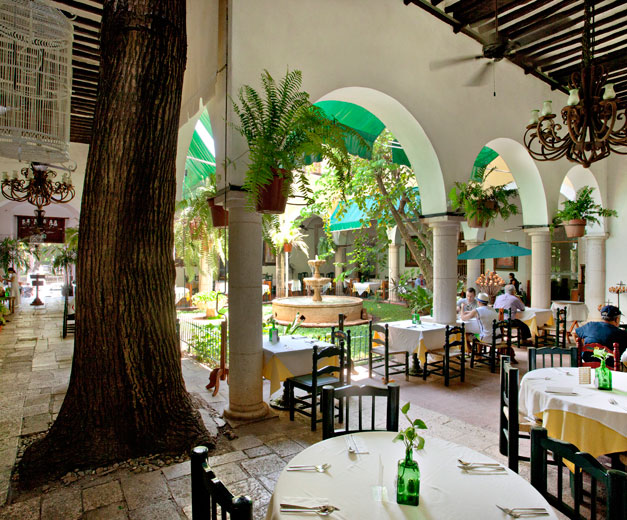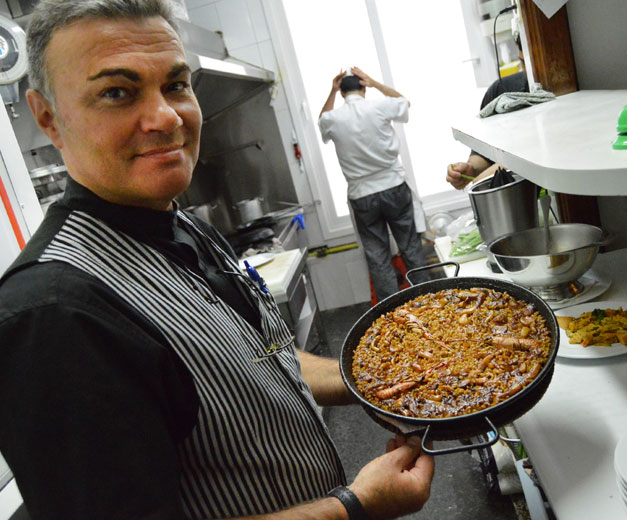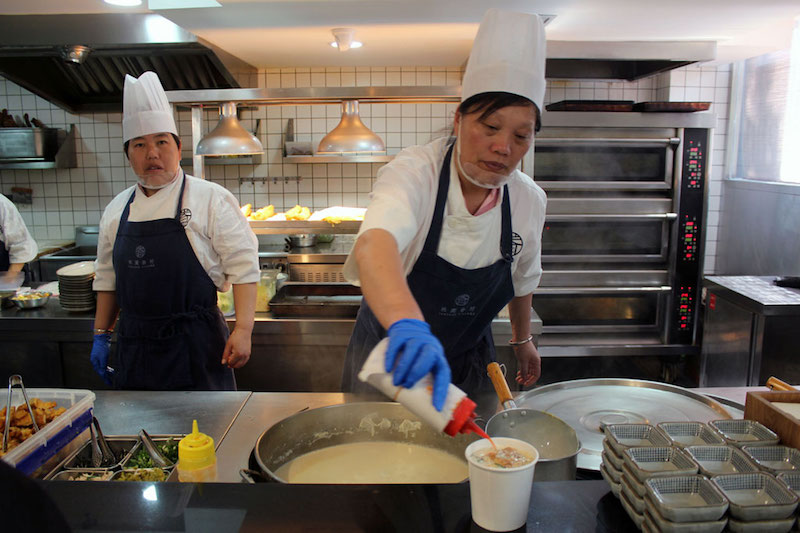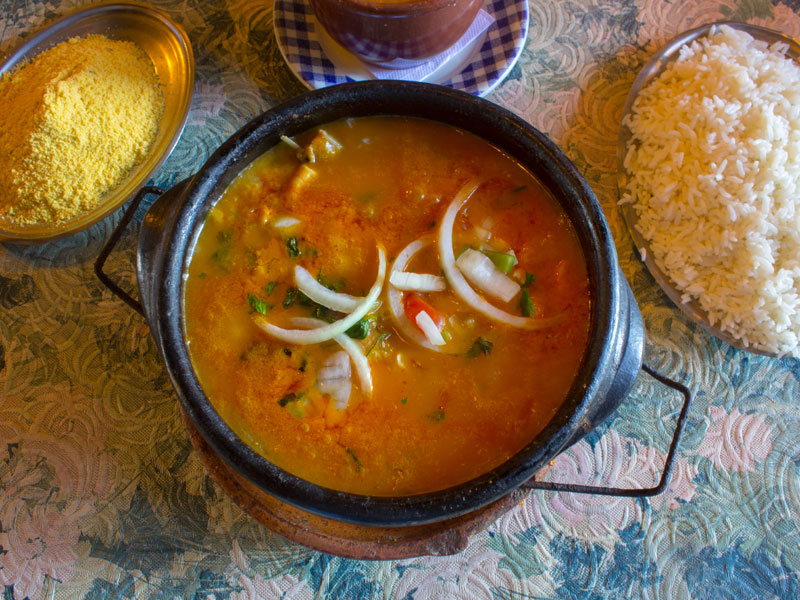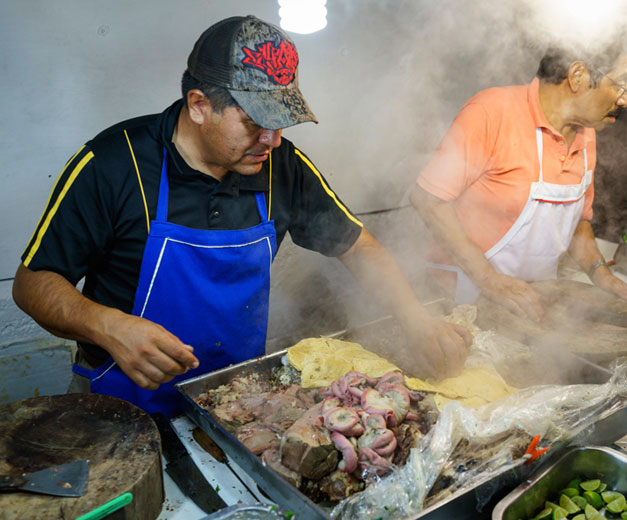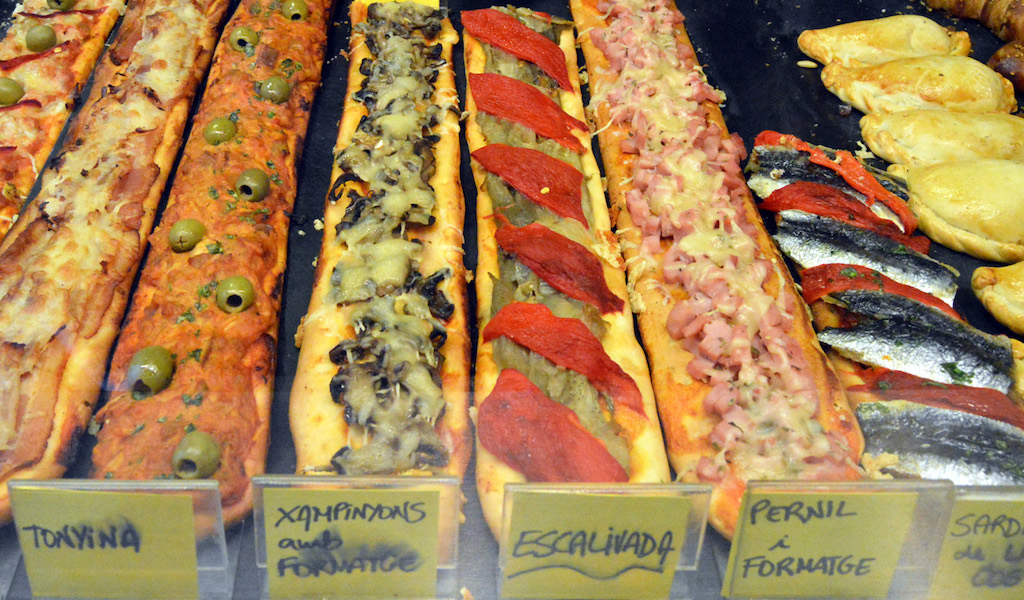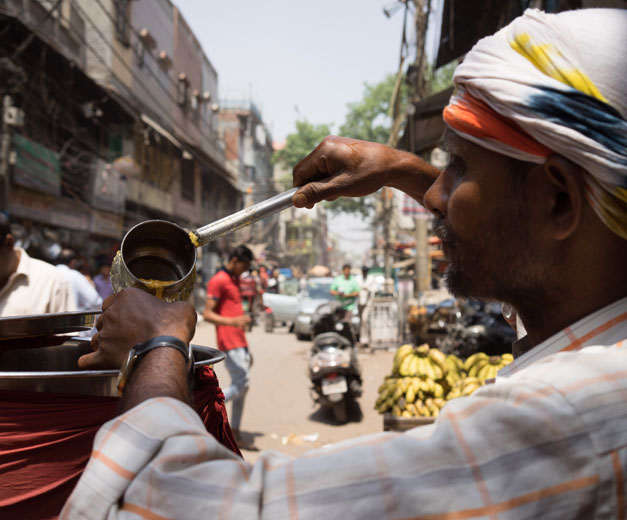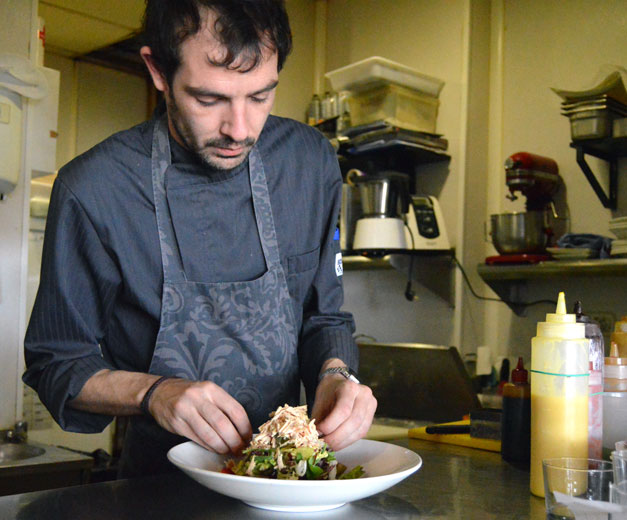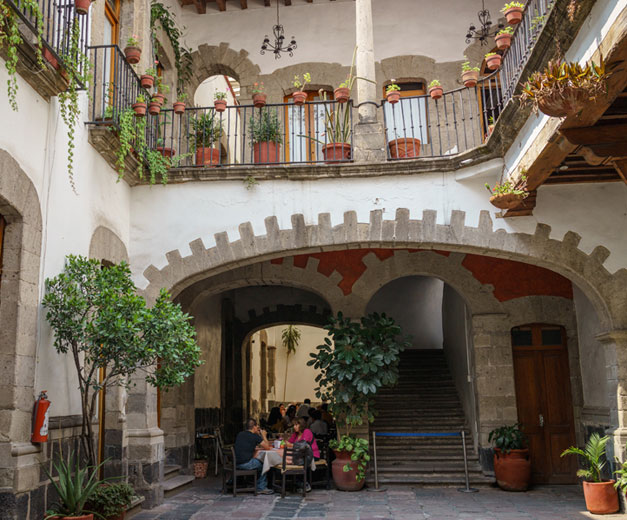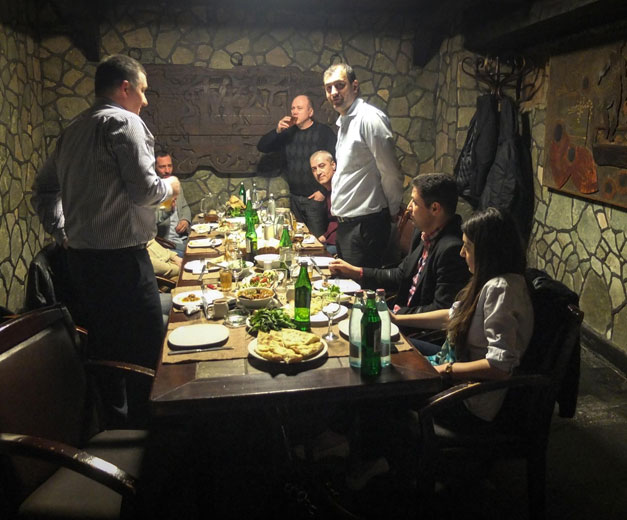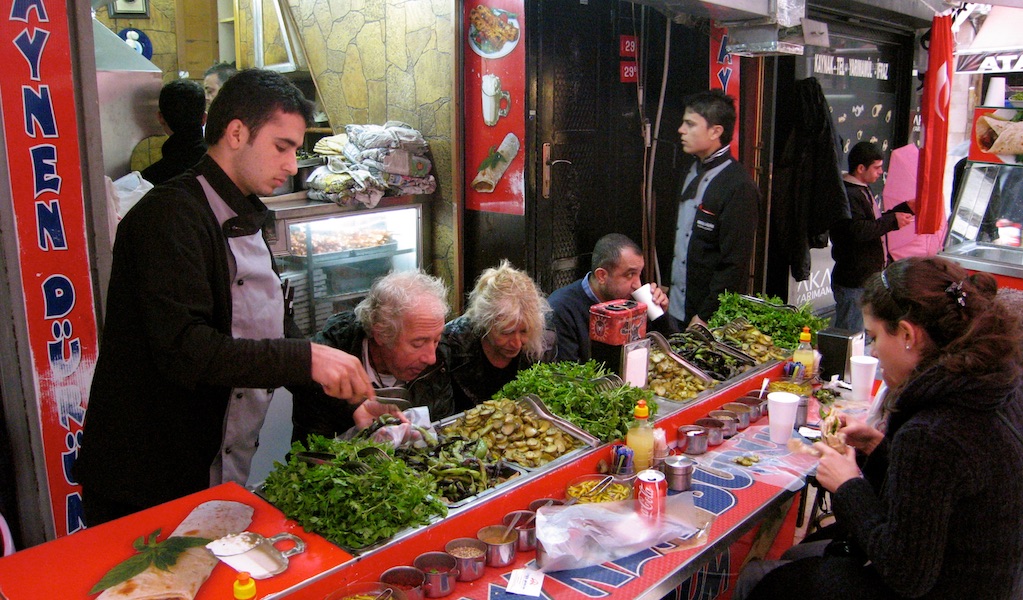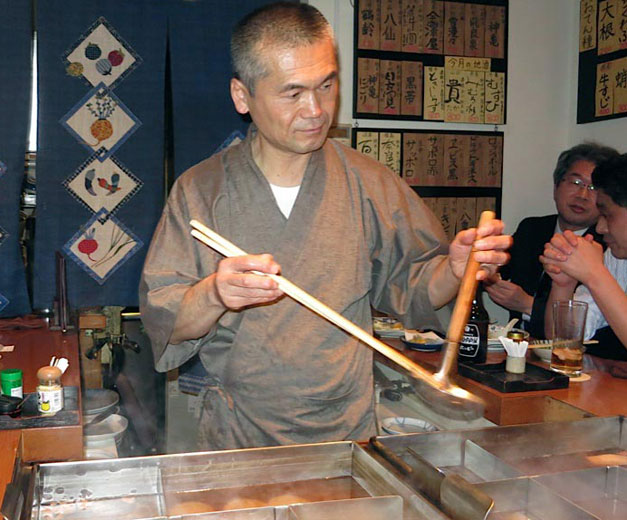We can't find the internet
Attempting to reconnect
Something went wrong!
Hang in there while we get back on track
Search results for
Athens
Weathering the Storm: Athens Eateries in a Time of Crisis
With the banks closed for almost two weeks and Greece’s position in the eurozone the subject of heated debate and endless negotiations for the past several months, we wondered how some of our favorite restaurants were coping. Greeks had voted NO to austerity the previous Sunday (July 5), but did this mean they were spending their spare cash on staples for harder times and going out only to take part in demonstrations or stand in ATM queues?
Read moreBarcelona
Mercat del Ninot: Rebound Market
El Mercat del Ninot opened way back in 1894, but recent renovations have breathed new life into this L’Eixample market. From time to time, the local government has updated noucentistes (19th-century) municipal markets in Barcelona, keeping the essence of the buildings but bringing them up to speed with current needs and trends. The Mercat de la Llibertat in Gràcia and Mercat de Santa Caterina in Born have received their facelifts, and the amazing Mercat de Sant Antoni is expected to open in 2016 after more than six years of construction.
Read moreTokyo
Tokyo: State of the Stomach
Several years ago, when the Michelin Guide decided to swoop into Japan and rate its cuisine, restaurateurs were slightly shell-shocked to learn that Japan came away with almost as many highly regarded establishments as France. (And in fact, Tokyo wound up with two more three-star restaurants than Paris.) Then, in 2013, UNESCO put washoku (Japanese cuisine) on its Intangible Cultural Heritage List, alongside such icons as the Argentine tango, Turkish coffee and falconry.
Read moreShanghai
Muslim Market: Western Exposure
Food lovers mourned the loss of Shanghai’s Muslim market when it packed up its stalls a couple of years back, but the closure wasn’t too unexpected. Street food is always in a state of flux in Shanghai, and add to that the ethnic tensions that have developed between the Chinese majority Han and the Muslim minorities that butchered whole lambs outside Putuo’s Huxi Mosque each Friday, and it seemed like a matter of time before the weekly event was closed. The government ostensibly blamed neighbor complaints (the bazaar seemed to have outgrown the sidewalks, interfering with traffic and sending smoke from the grills into the residential areas), and vendors were abruptly told to pack up.
Read moreMexico City
Marisquería El Caguamo: Downtown Seafood Paradise
A foodie friend of ours took us to El Caguamo – aka K-guamo – for the first time a few years ago, promising us that this was the best marisquería (seafood restaurant) in the city. And since then, it has become one of our favorite downtown stops. For almost 40 years, the Tamariz family has been selling tasty shellfish and seafood on the sidewalk of Ayuntamiento Street, just a couple of blocks away from San Juan market in the heart of Mexico City.
Read moreIstanbul
Baylan Pastanesi: A Slice of History
The roaring '20s: Flappers in the Pera Palas Hotel were dancing the can-can, Art Deco was all the rage, the Turkish Republic was born. Hope, progress and newness double-stepped to the beat of Kemal Atatürk’s drum. This was the backdrop to which two Istanbul bakers, Filip and Yorgi, opened a whimsical chapter in the culinary story of the city
Read moreBarcelona
CB on the Road: The Catalan Stew Masters of Juneda
Upon the hot and dry plains of Les Garrigues, two irrigation canals cut through an agricultural expanse, diverging first from the ample Segre River, which runs through the center of the city of Lleida, before subdividing again, their meandering channels reaching farther and farther into an otherwise parched plateau. These life-giving tributaries are collectively known as the Canal d’Urgell. Les Garrigues, a region of the Catalan province of Lleida, is a fertile green splotch on an otherwise arid landscape 150 kilometers inland from Barcelona. The irrigation of this region, first conceptualized by the Moors in the 13th century but carried out on a grand scale in the late 1700s, has enabled the cultivation and nurturing of farmland, where a crop of prized arbequina olives and fragrant almond trees now stretches toward the horizon.
Read moreTbilisi
Sarcho: Museum-Quality Eats in Old Tbilisi
In a land with no breakfast culture to speak of, a couple slices of khachapuri and a cup of tea or coffee are all it takes to fuel you up until suppertime. If you need a snack to carry you over, you grab a pie at any one of the hundreds of khachapuri stands in Tbilisi, and no supra – feast – is complete without an “Imeretian” or “Megrelian” pie for every three people at the table.
Read moreMexico City
Señora Ema: The Wild Brunch
Update: This spot is sadly no longer open. The tianguis, or street market, has been an essential part of Mexican culture since pre-Hispanic times. In Mexico City, every neighborhood has at least one weekly tianguis, most selling produce, fish, meat and household goods, so families can buy all they need for the week in a single place. All of these markets, large or small, have one thing in common: an abundance of street food stands. Many of these vendors move around the city with the markets, and some have become so well-loved that neighborhood residents eagerly await the day of their local tianguis so they can enjoy tasty food served streetside.
Read moreRio
Aconchego Carioca: Pretension-Free Zone
The Praça da Bandeira, an area of Rio that until recent years was mostly known for prostitution and cheap inner-city housing, is rapidly changing. Lying in the shadow of the massive Maracanã Stadium – built for the 1950 World Cup and the planned location of the opening ceremony of the 2016 Summer Olympics – it is alive with new construction and pedestrian traffic, which are changing the tired face of this historical but underappreciated neighborhood. And sitting snugly in the midst of this new buzz is Aconchego Carioca, a restaurant and bar with one of the best beer menus in Rio.
Read moreElsewhere
Café Ganesh: New South Africa (on a Plate)
In the late 1980s, Anthony Mlungisi Baker lived in Spain and other parts of Europe to dodge the military draft in South Africa. On February 11, 1990, the release of Nelson Mandela signaled the end of the apartheid regime and time for Baker to return home and become part of a new creative transformation. With a love for entertaining and cooking for his friends, Baker saw a gap in the “New South African” market for something different in the bohemian Observatory district (known as Obz to locals). The result was Café Ganesh, which opened its doors on November 10, 1990, and has since gone on to become a neighborhood institution.
Read moreBarcelona
¡Salud!: Barcelona's Top 5 Places for Vermouth
Why are you seeing colorful, 1960s-era carbonated water siphons everywhere in Barcelona? Because they’re the symbol of our beloved vermut ritual. The phrase hacer el vermut (literally “to do the vermouth”) in Spain has for decades described not only that delicious beverage, but also any kind of pre-lunch aperitif. But since the end of the 19th century in Barcelona, the vermut ritual – a fresh drink accompanied by tapas composed usually of preserved food, cold cuts, cured or marinated fish or seafood – has been a way to bring people together before meals. Perhaps no one is more responsible for vermouth’s popularity here than Flaminio Mezzalama, the Italian Martini & Rossi representative in Spain, who in the first decade of the 20th century opened two beautiful Art Nouveau vermouth bars, which became hugely popular. Mezzalama died in Torino in 1911, but the fame of vermouth in Catalonia only grew, with local investors putting their money into production of Catalan vermut.
Read moreRio
CB on the Road: Northeastern Exposure in João Pessoa
Chat up the older residents of a Rio favela and you’re likely to start hearing romantic stories about Brazil’s northeast: those colorful cajú and mangaba fruit trees, the clear turquoise ocean, the folksy and upbeat forró music, chewy tapioca sandwiches and cakes. Brazilians call that saudades – a longing for something lost, which may or may not exist in the form one dreamily remembers it. These are the pleasant memories many northeastern immigrants hold amidst the urban hustle of crowded Rio de Janeiro, where a working-class Brazilian knows the beach exists but easily lives a hot two-hour bus ride away from it.
Read moreAthens
Green Scene: Athenian Gardens of Eating (and Drinking)
In terms of greenness, Athens doesn’t even come close to other European capitals, with their verdant parks and blossoming gardens. The truth is, modern urban development has not been particularly gentle with this city. Numerous concrete buildings, along with poor road design, hem in inhabitants and visitors with featureless views.
Read moreMexico City
CB on the Road: Seafood (and Hard Times) in Veracruz
Sitting on the boardwalk of Veracruz, about five or six hours east of Mexico City, we watch the blinking lights of shrimp and fish boats in the farthest distance, knowing our next dinner is on its way. A day before, arriving from the bus, all we wanted was especially satisfying seafood, and the hunt brought us downtown, which, in the past, has always provided. Veracruz is a warm harbor, embracing all comers and proposing excellent food and endless dancing into the night on the city’s street corners. Or that’s how we remembered it.
Read moreIstanbul
Ramadan's Iftar: The Break Fast of Champions
Think of Ramadan, which just began in many parts of the world, as a kind of monthlong biathlon that consists of an all-day race to beat back the hunger and thirst of fasting, followed by an all-night marathon of eating and drinking in order to fortify the body for the next day’s fast. In recent years in Turkey, iftar, the traditional break fast meal that used to mostly consist of some dates and a freshly baked round of Ramadan pide, has started to become an increasingly trendy affair, with ministers, businessmen and regular people trying to make an impression by hosting ever more lavish meals.
Read moreShanghai
Zongzi: Dragon Boat Delights
In typical Shanghai fashion, good things come to those willing to stand in the longest lines, or to pre-book the farthest in advance. We’ve seen the queue for braised duck at Guang Ming Cun swell to several hours long during the Chinese New Year, and A Da's scallion pancakes require a minimum hourlong wait on most days, yet we had never expected the same for the humble zòngzi (粽子).
Read moreIstanbul
CB on the Road: Deniz Börek Salonu in Edirne
Edirne has more meat to offer beyond the glistening liver that bears its name. Deniz Börek Salonu has crowned the top of Saraçlar Caddesi since 1986. Every morning, lines of salivating citizens hurry to work with crunchy poğaças or sit down to enjoy steaming heaps of stuffed pastry. While there are many börek places in Edirne, few are able to produce the consistently delicious product that Deniz is known for. Imagine, if you will, savory labyrinthine baklava sheets of golden-brown pastry, stuffed like sausages. The bready tubes are baked, set on a hot table in a window, then viciously chopped into strips with a knife that looks like it should belong to a 19th-century werewolf hunter. Common fare at börek places are kıymalı (minced meat), peynirli (salty white cheese), patatesli (potatoes) and ıspanaklı (spinach).
Read moreMexico City
Best Buzz: Mexico City's Top 5 Coffee Shops
Like other cities around the world, Mexico City has been flooded with big-name chain coffee shops that charge exorbitant prices for a cup of bad coffee. Fortunately, D.F. is a city of contrasts, where good taste in coffee still exists. We set out to find the best coffee shops in town and were surprised by what we found. Our first stop was one coffee shop we have been visiting for several years now, Café Triana, inside Mercado San Juan, the city’s first gourmet stop par excellence. Marilu and Pablo Arana started selling coffee from Veracruz, a city on the Gulf of Mexico with a Caribbean feel, in the aisles of the market until they got the chance to get a booth and start their own coffee shop. Their establishment has since been featured in many national and international media outlets.
Read moreTbilisi
Le Café du Monde: Tbilisi's Coffee Guru
With cafés popping up all over the country, from the arty boutique coffeehouses of Tbilisi to the Lavazza kiosks in villages like Zestafoni, it is easy to forget the humbler days of Georgia’s coffee culture, when an “Americano” was a chemically enhanced instant coffee powder in a stars-and-stripes-emblazoned packet added to a cup of hot water.
Read moreLisbon
Sardines for Santo António: Lisbon's Big Little Fish Fest
The smell and the smoke attract us like a magnet. We can’t see them, but there are sardines being grilled over charcoal somewhere nearby. We are in Largo do Chafariz de Dentro, where the Fado Museum is, and the strong smell of the popular deep-fried farturas (a big churro) goes unnoticed due to the overwhelming – and delicious! – smell of grilled sardines everywhere.
Read moreBarcelona
CB on the Road: Lleida’s Gathering of the Snails
Each year at the end of May, more than 12,000 penyistes and 200,000 hungry visitors devour 12 tons of snails in one mere weekend in the city of Lleida, the capital of Catalonia’s interior. The Aplec del Caragol (“Snail Gathering”) is now an internationally known gastronomic event of impressive magnitude. Just under two hours inland from Barcelona by car and an hour by high-speed train, Lleida is an easy trip worth taking, especially in late spring, when friends and families gather to eat and drink with abandon. Typical foods prepared by the colles (gangs) of penyistes (participants) who register together and participate in the Aplec every year (sometimes for decades without fail) include paella, fideuà (a typical pasta preparation), grilled meats and sausages, stews and salads. However, the tender, tasty land snail is the main attraction.
Read moreIstanbul
CB on the Road: Kokoreç at the Edirne Pazar
For the past 24 years, Cemil Tuncay has wheeled his small metal cart to the biweekly produce pazar in Edirne. He sets up shop around noon, lighting coals under what can be described as massive, torpedo-shaped sausages. Kokoreç is a simple fast food made from bits of sheep left over from butchering, stuffed into intestines to the bursting point. It is a one-man operation. With the exception of his wife (who sometimes helps him clean and prepare the meat), Tuncay goes it alone. His mustachioed face is often grizzled with a little bit of stubble and worn by years’ worth of fragrant grill smoke. He is tall and stoops over a bit to prepare each order, doing so with a jaunty smile and a twinkle in his eyes.
Read moreAthens
Bakalogatos: Grocery Cat
Whether you’re a native Athenian or just visiting, Kypseli is not likely to be on your list of favorite haunts unless you happen to have roots there. It’s not connected to the Metro, it boasts neither museums nor fancy boutiques, and yet it must be one of the liveliest districts in Athens. T
Read moreIstanbul
Akdeniz Hatay Sofrası: The Syrian Connection
The only positive thing about the torturous annual visit we used to make to Istanbul’s main police station in order to renew our residence permit was the chance to drive through the low-rent Aksaray neighborhood. It's home to dozens of intriguing off-the-beaten-path restaurants, most of them opened by migrants from other parts of Turkey. On one trip through the area, we noticed a large, newish-looking sign belonging to a restaurant called Akdeniz Hatay Sofrası. Hatay is the name of Turkey’s southernmost province, an area bounded by the Mediterranean and the border with Syria.
Read moreBarcelona
Capet: Small Wonder
Spain – and of course Barcelona – has always been a breeding ground for creative types in the kitchen. There’s an ever-increasing number of restaurants that take as inspiration first traditional preparations and update them with ingredients from a global pantry, yet keep their local soul intact. It’s a common thread among many young chefs in this town, and it has created a culinary scene that feels modern, unexpected – and personal. Let’s throw in an additional twist: a chef who’s not Spanish.
Read moreElsewhere
Mariam's Kitchen: Cape Town Masala
In Cape Town, good eating is easy to find, but the best salomie – roti flatbread wrapped around curry – is worth searching for. This search took us to Mariam’s Kitchen, which is attached to the side of St. George’s Mall arcade across from the Cape Times and Argus Newspaper House in Cape Town’s business district. For a feeling of home, many locals tuck into this sit-down and take-away café, which has offered a plethora of halal meals for over a decade. The homemade menu is a masala (mix) of Cape Town’s unique fast-food culture.
Read moreShanghai
Bai Jia Qian Wei: Home Maid Meals
Editor’s note: We regret to report that Bai Jia Qian Wei has closed. Mention Anhui to most Shanghai residents, and you’ll most likely get a response along the lines of, “My āyí is from there.” Migrant workers from Anhui, one of the country’s poorest provinces, flood into Shanghai tasked with building the city’s skyline, massaging the clenched shoulders of white-collar workers and washing our dishes. Despite the fact that the province is the source of a third of all of Shanghai’s migrant workers – and that its cuisine ranks among China’s Eight Culinary Traditions – Anhui food isn’t held in the same regard as Sichuan or Cantonese by Shanghai gourmets.
Read moreAthens
Sesame Sweet: Making Pasteli in Amorgos
George Vassalos is a beekeeper, farmer, master distiller. He lives in Lagkada, in the center of Amorgos, at the southern end of the Cyclades, and which was made famous by the movie Le Grand Bleu (1988). We were lucky enough to be at his farm recently when he made pasteli using his own thyme honey and sesame grown in Chalkidiki.
Read moreElsewhere
First Stop: David Sterling's Valladolid
David Sterling is chef, owner and maestro at Los Dos in Mérida, Yucatán, the first culinary adventure destination devoted exclusively to Yucatecan cuisine. He is the author of Yucatán: Recipes from a Culinary Expedition. In 2015, the book was honored as Best International Cookbook and Best Cookbook of the Year by the James Beard Foundation; it also won The Art of Eating Prize for best food book of the year. Sterling has been featured on The Martha Stewart Show (“Martha in Mexico”) and Mexico: One Plate at a Time, with Rick Bayless. He’s also been acclaimed by The New York Times, The New Yorker, Gourmet, Travel & Leisure, Globe & Mail, ELLE, National Geographic Traveler, Condé Nast Traveler and Frommer’s.
Read moreShanghai
Zifantuan: Belle of the Rice Ball
One of the seven necessities of Chinese daily life, rice is eaten in many forms throughout the day, including – and especially – at breakfast. Congee is undoubtedly China’s best-known breakfast food, but less famous globally, and wildly popular locally, is the unassuming rice ball (饭团, fàn tuán).
Read moreIstanbul
Van Kahvaltı Evi: The Kurdish Breakfast Club
In Turkey’s predominantly Kurdish eastern provinces, breakfast is not just for breakfast anymore. Particularly in the city of Van, not far from Turkey’s border with Iran, the morning repast has been turned into serious business: The town is filled with dozens of kahvaltı salonları – breakfast salons – that serve a dizzying assortment of farm-fresh breakfast items day and night.
Read moreShanghai
Shanghai's Top 5 Street Foods
Shanghai is a street food lovers' paradise, with carts slinging dumplings, pancakes, noodles, buns and grilled meats on sidewalks across the city, morning, noon and night. These are a few of our favorites. 1: Shengjianbao A Shanghai specialty, shēngjiān mántou (生煎馒头) – or shēngjiān bāo (生煎包), as they’re known everywhere else in China – are juicy pork buns wrapped in bread dough, then arranged in a flat, oil-slicked wok in which the bottoms are deep-fried till they are crispy. Although shengjian mantou can be found on most street corners in the morning, we’re especially fond of the delicious misshapen buns at Da Hu Chun. A Chinese Time-Honored Brand (老字号, lǎozìhào), Da Hu Chun has been splattering grease since the 1930s and, nearly 80 years later, has six restaurants across Shanghai. The venue’s chefs use the rare “clear water” technique, frying the pinched side of the dough face-up to create little Frankenstein buns that might not be as photogenic as the more common “troubled water” variety, but that have a thinner skin that gets extra crisp – and we’ll sacrifice good looks any day if it means better flavor. 2: Guotie
Read moreRio
Capitania dos Copos: Shrimp Ahoy
Ilha do Governador (“Governor's Island”), the biggest island in Guanabara Bay, was a popular weekend destination for many Rio inhabitants decades ago. In the 1980s, with the construction of the Rio International Airport on the island, the introduction of oil industry-related activities in the surrounding area and the beginning of a sad cycle of pollution and overpopulation, the place lost a good part of its grace and charm – but not all of it.
Read moreMexico City
Tacos Lolita: Head Case
As with so many of the world’s great cuisines, Mexican cooking makes the most of every part of the animal, and for many of us culinary adventurers, beef cabeza, or head, is the source of some of the tastiest meat you can find in a tortilla. We’d been on the lookout for the best tacos de cabeza in the city, and we think we’ve finally found them.
Read moreBarcelona
Coca de Recapte: Flat Food
Coca is a word used in Catalonia and neighboring regions for many kinds of baked doughs and pastries, both sweet and savory. The Catalan and Occitan word has the same root as “cake” and comes from the Dutch word kok, which entered the local lexicon during the reign of the Carolingians in Catalonia (759-809)
Read moreAthens
CB on the Road: Eating in Rafina
You don’t need the excuse of a ferry departure to head for the port of Rafina, on Attica’s east coast. Its long, open beach is a favorite among windsurfers, its fish stalls carry the catch from most of the central Aegean and, most important, it offers a handful of excellent eateries. But how can you separate the standouts from the run-of-the-mill?
Read moreBarcelona
El Kaiku: On the Waterfront
Editor’s note: We regret to report that El Kaiku has closed. “We have paper tablecloths and napkins on the tables for two reasons: to not forget our roots as a workers’ canteen and because we prefer to spend the money on good product for our customers.” That was how Rafa Alberdi explained to us one of the keys to his restaurant, El Kaiku. Located in Barceloneta in front of what was once shipyards, the working man’s bar was transformed into an excellent neighborhood restaurant, where diners can enjoy cooking with traditional roots and modern leanings made from locally harvested seafood and other ingredients. The lovely terrace, one of our favorites in this city, is a boon as the weather warms up.
Read moreMexico City
San Francisco: Dining Across State Lines
Update: This spot is sadly no longer open. True to its name, Mexico City’s Centro Histórico is full of history everywhere you look. Walking its cobblestone streets guarded by historic buildings, some 500 years old, is always a great learning experience for us. On one of our recent walks through this amazing part of the city, we stumbled upon one building that caught our attention. First of all, there was a sign at the entrance that said that José Martí, Cuban poet, writer, philosopher and revolutionary leader, lived in the building at the end of the 19th century.
Read moreTbilisi
Alani: No Brainer
Last week we had a hankering for baked brains, and in Tbilisi that used to mean only one thing – a visit to Alani, the Ossetian restaurant near the sulfur baths in Old Tbilisi. The venue is named after the ancient North Caucasus kingdom of the Alans, ancestors of the modern-day Ossetians; one might think this unpopular in a country that lost a war against Ossetian separatists (and Russians) in 2008, but the fact that it is highly regarded is testament to Georgia’s paradoxically tolerant nature. Of course, it helps to have consistently quality cooking too.
Read moreTokyo
Hapineko: Cat Club
We’d always hesitated. People said some denizens of this café could be haughty and unwelcoming. Others said you might be rolled for a pretty penny buying food. Friends asked why we’d go there while knowing we could do the same things at home. We decided that with the possibility of a decent cup of coffee in good company on offer, we’d take the risk.
Read moreRio
CB on the Road: Daytripping in Niteroi
From 6 a.m., Tuesdays through Sundays, over 500 customers – from housewives to Michelin-starred restaurateurs – stream into a two-story, tile-front fish market in working-class Ponta d’Areia, a neighborhood in Niteroi, across Guanabara Bay from Rio de Janeiro. Since 2 a.m., stall owners have been out greeting fishing boats at docks across the city, where captains return from four- to 10-day trips along Brazil’s southeast coast, up to the Lake Region (Região dos Lagos, which includes the cities of Maricá, Saquarema and Cabo Frio, still in Rio de Janeiro state) and south to the state coastlines of São Paulo, Paraná and Santa Catarina.
Read moreIstanbul
Aynen Dürüm: Feeding at the Kebab Trough
As we’ve written here before, if you do a little rooting around, the Grand Bazaar can be as much about the food as it is about the shopping. Case in point: Aynen Dürüm, a microscopic kebab shack at the edge of the sprawling bazaar that serves exceptionally good wraps (or, as they’re called in Turkish, dürüm).
Read moreTokyo
Den: Sake Central
Den is either a really cool sake bar that serves amazing oden, or an oden-ya that has a fabulous sake list. Either way, it’s a great place to taste the best sake from around Japan and devour perfect oden that’s made to order in the little kitchen behind the noren curtain.
Read moreBarcelona
Catalan Cheese, Part 2: The ’80s Remix
Update: Poncelet Cheese Bar is sadly no longer open. In the first part of our series on Catalan cheeses, we wrote about very old traditions – going as far back as the Middle Ages and perhaps even further – including the practice of transhumance by shepherds in the Pyrenees. As cheese expert Eva Vila explained to us, up until the 1980s, many artisanal cheeses were hard to come by; they could only be found in the small, often remote villages or farms where they were made.
Read moreAthens
CB on the Road: Seafood in Nea Artaki
Chalkida, the small peninsula on central Evia (Euboea) just an hour’s drive from Athens, is an ideal day-trip destination for urbanites. It’s famous for an unusual phenomenon, in which the tide in the Strait of Evripos changes direction several times a day, and it’s also known among tourists for its fresh and delicious fish and seafood. When Chalkideans want fresh seafood, however, they head to the less touristed town of Nea Artaki, just north of Evia’s main city. In the tiny port, there’s a classic promenade lined with taverns, and the penultimate, Teskos, is our favorite destination. On a recent visit, the weather was beautiful, sunny and cool enough for us to sit on the sidewalk adjacent to the sea.
Read moreShanghai
Jade Garden: Get in Line
Planning dim sum with friends at Jade Garden might require “Save the Date” cards: The flagship restaurant of Hong Kong’s Maxim’s group is the hottest table in town and – at the time of printing – the next available reservation is six months away. For yum cha aficionados who aren’t deterred by hours-long queues, the Jade Garden does save some tables, but it’s less of a walk-in and more of a mass sit-in.
Read more


